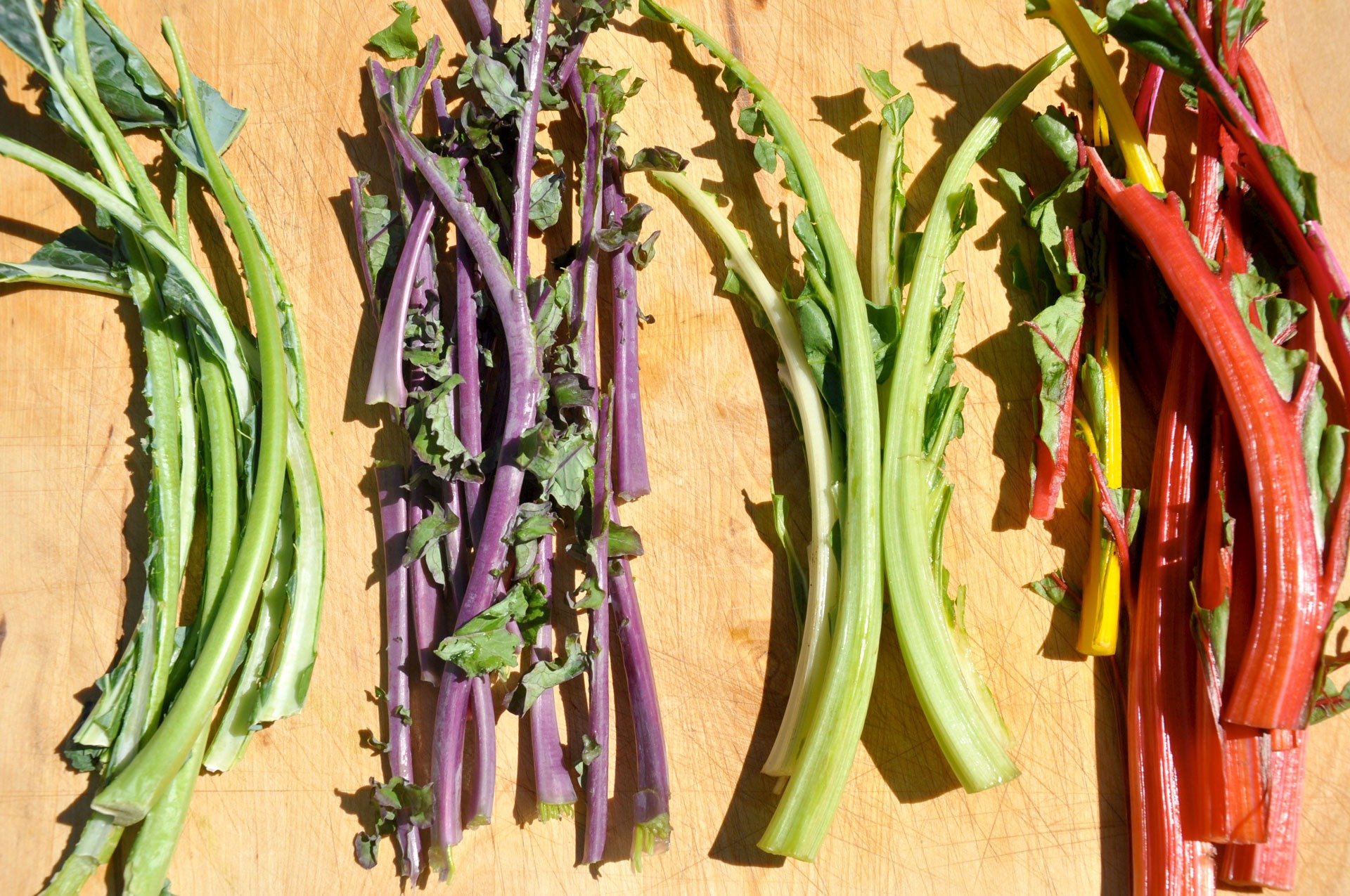Real Food Encyclopedia | Mustard Greens
Mustard greens haven’t enjoyed a culinary renaissance like kale, and though a soul-food staple, are sometimes overshadowed by collards. But they certainly shouldn’t be ignored: Their peppery bite is perfect in summer salads, tossed in with legumes like lentils or simply sautéed like spinach.
Mustard, a term that encompasses various species in the genera Brassica and Sinapis, has been cultivated for centuries across Asia and Europe for both its leaves and its edible seeds. Some varieties are native to Asia — probably Central Asia or somewhere in the Himalayan region — and some to Europe. (Ancient Greek historian Herodotus wrote of mustard cultivation as early as the 5th century BCE.) China is one of the major secondary sources of genetic variation of the mustard plant, according to botanists, centered primarily around the Sichuan region.
Fun facts about mustard greens:
- In Medieval Europe, courts and monasteries often employed a person, called a “mustardarius,” whose sole job was to oversee the growing and making of mustard.
- Mustard plants have been successfully used in phytoremediation, the use of plants to remove toxic substances (like heavy metals) from the soil.
What to look for when buying mustard greens
Leaf mustard comes in an array of shapes and sizes. The ruffled-edge, bright green mustard called Southern Giant is probably the most common in the U.S.. But mustard greens vary from small-leaved to large, from yellow-green to purple to deep, dark green. Some varieties, like the Japanese mustard mizuna, have thin, deeply serrated leaves with tender stems; others, like Red Giant, have large, softly rounded leaves with very thick stems.
For all types of mustard, look for greens that are perky (not soft or floppy) and steer clear of yellowing or browned leaves, or those with mushy spots.
Sustainability of mustard greens
Mustard greens are increasingly used as a cover crop: The plants are cold hardy, grow rapidly and even have natural chemical compounds called glucosinolates that may help combat soil-borne diseases and weeds.
In spring of 2023, genetically engineered (GE) mustard greens — modified to reduce bitterness — became the first CRISPR-edited produce to hit U.S. grocery stores. Read more about the environmental concerns presented by GE seeds on FoodPrint.
Pesticides
Though mustard greens are often described as being easy to cultivate, they are susceptible to certain pests, and pesticide use is not uncommon. Kale, collard and mustard greens (as a group) appear at No. 3 on the 2023 “Dirty Dozen” from the Environmental Working Group, outranked only by strawberries and spinach in terms of pesticide residues detected. The best way to avoid pesticides is by buying organic or talking to your purveyor at the farmers’ market about their growing practices.
Seasonality
Mustard greens are primarily a cool-season vegetable and are at their peak in spring and fall. Hot weather causes the plants to bolt (go into flower) at which point their greens can turn unpleasantly bitter. A fall crop is often planted because mustard is frost-resistant and easily overwinters in temperate areas.
Eating mustard greens
Storing
Mustard greens keep best when wrapped in a barely damp paper towel and stored in an open zip-top bag in the crisper drawer. They are best eaten within three to four days.
Cooking
Mustard greens can be steamed, stirred into soup, stir-fried, braised or sautéed like other hardy greens (try them in place of spinach or Swiss chard in recipes and see what you think). They pair deliciously with beans (and lentils), pork (especially ham hocks), tofu, garlic, onions and citrus. Their peppery flavor is much reduced through cooking, and an initial blanch can help tame it even further.
Mustard greens can also be eaten raw in salads — simple Caesar-style, for example, or with apples, a common pairing. You can seek out a less spicy variety, if you find the flavor intense; adding fat, salt and a little acid (like vinegar or lemon juice) helps cut the bitterness.
Preserving
Mustard greens take super well to lacto-fermentation (try them Vietnamese-style with dưa cải chua) and pickling; preparations like this are used as a condiment in many Asian cuisines, including Indian, Japanese, Vietnamese, Thai and Chinese (especially Sichuan). Mustard greens can also be frozen quite successfully for later use.
Nutrition
Like a lot of greens, leafy mustard is super good for you. One cup (raw) has more than 100 percent of your recommended daily intake of Vitamin K, which is necessary for blood and bone health. The greens are also a great source of Vitamin C, with decent amounts of Vitamin A, folate, calcium and fiber. (There’s even a surprising, though small, amount of protein.)
Glucosinolates — the chemical compound in mustard greens that causes their characteristic bitter bite — has been studied for anti-cancer properties. High consumption of mustard greens and their Brassica brethren has been linked to reduced risk of prostate cancer. And one more bonus: According to horticulturalists at Purdue University, eating mustard greens in the Brassica family “may impart a body odor repellent to mosquitoes.”
Top photo by bhofack2/iStock.


